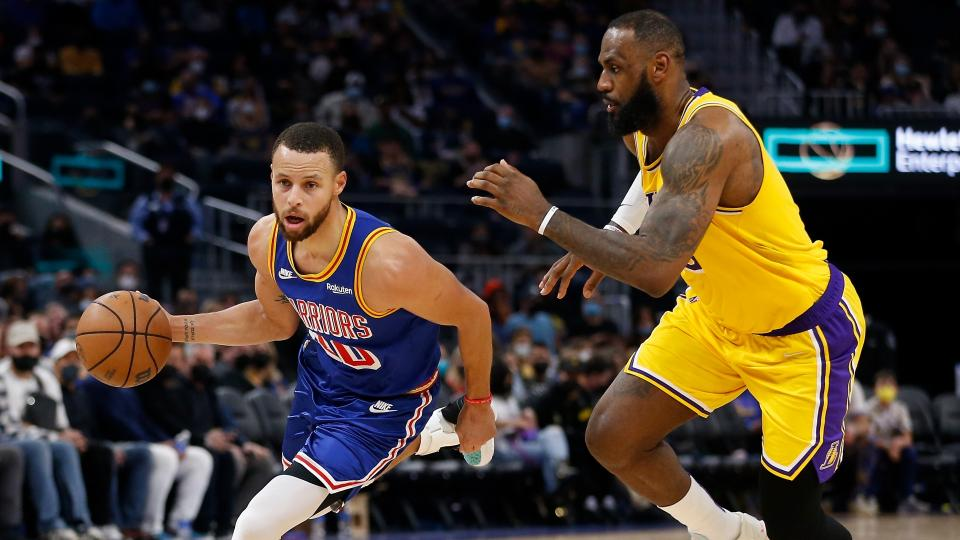How Many Steps Can You Take in Basketball
In basketball, a player is allowed to take a certain number of steps without dribbling the ball. The specific rule regarding steps can vary slightly depending on the level of play and the governing body (such as FIBA for international play or the NBA for professional play). Read about What Does BEEF Stand for in Basketball
NBA (National Basketball Association): In the NBA, the rule is often referred to as the “gather step” or “two-step rule.” A player who receives a pass or gains control of the ball is allowed to take two steps after gathering the ball, before either shooting or passing. The first step is usually considered to be the step when the player gathers the ball, and the second step is the step taken after the gathering. This rule allows for a smoother transition from receiving the ball to making a play.
Also read the Article: How Many Laps Around a Basketball Court Is a Mile
FIBA (International Basketball Federation): FIBA’s rules are generally similar to the NBA’s when it comes to steps after receiving the ball. A player can take two steps after gaining control of the ball before they need to either pass, shoot, or start dribbling.
The Basic Movement
In its purest form, basketball allows a player to take two steps while in possession of the ball. This basic concept is the foundation of movement on the court. These two steps offer the player the flexibility to adjust their position and find a better passing lane or shooting opportunity.
The Two-Step Rule
According to the official basketball rules, a player who catches the ball while moving can take two steps before releasing it to a teammate or attempting a shot. This rule empowers players to make quick decisions and maintain the flow of the game. It’s a balance between giving players the freedom to move and ensuring fair play.
The Gather Step
To understand the traveling rule better, it’s essential to grasp the concept of the gather step. When a player stops dribbling and establishes their “pivot foot,” they’re allowed an additional step to gather the ball and set themselves up for the next move. This subtle yet crucial step keeps the game dynamic while preventing excessive movement.
The Jump Stop
The jump stop is a fundamental move that helps players come to a quick halt without violating the traveling rule. By simultaneously landing on both feet, a player establishes a solid pivot point, enabling them to pass, shoot, or pivot without the risk of traveling.
The Pivot
Pivoting is an art in basketball. It allows a player to turn on one foot while keeping the other in place. This move is instrumental in evading defenders and finding open teammates. Mastering the pivot enhances a player’s ability to navigate the court effectively.
Understanding the Traveling Violation
A traveling violation occurs when a player takes too many steps without dribbling or establishes a pivot foot improperly. This violation results in a turnover, giving the opposing team possession of the ball. The traveling rule ensures that players don’t gain an unfair advantage by moving excessively. Referees play a vital role in enforcing the traveling rule. Their keen eye for footwork and movement helps maintain the integrity of the game. Players, coaches, and fans alike must respect the referees’ decisions and the importance of fair play.
Common Misconceptions
There are misconceptions about the traveling rule, often fueled by a lack of understanding. For instance, the “gather step” is sometimes mistaken for an extra step, leading to confusion. By clarifying these misconceptions, players can better adhere to the rules and enhance their skills. Basketball rules have evolved over time, and so has the traveling rule. Changes have been made to adapt to the pace and style of the modern game. As the sport progresses, so does the interpretation of its fundamental rules.
Incorporating Strategy
Understanding the nuances of the traveling rule allows players and coaches to develop strategic plays. Creating opportunities through precise footwork and calculated movements can make all the difference in a game’s outcome.
Refining Footwork Skills
Footwork drills are an essential aspect of player development. By honing footwork skills, players can optimize their movement, maintain balance, and execute plays more effectively. A solid foundation in footwork can elevate a player’s overall performance. Youth players, in particular, benefit from learning the intricacies of the traveling rule early on. Proper coaching and guidance lay the groundwork for future success. Teaching young athletes the importance of footwork fosters a generation of skilled and disciplined basketball players.
Refining Offense and Defense Strategies
The traveling rule doesn’t only affect offensive movements but also plays a role in defensive strategies. Defenders need to anticipate their opponent’s movements while adhering to the rules. Properly timed challenges can disrupt an offensive player’s rhythm and potentially lead to turnovers.
The Gray Area: Euro Steps and Gather-Hop Moves
In recent years many steps can you take in basketball have witnessed the rise of creative footwork techniques like the Euro step and gather-hop. These moves add an element of deception to a player’s offensive arsenal, allowing them to cover more ground while maintaining control of the ball. The traveling rule’s interpretation of these moves has sparked debates among players, coaches, and fans.
Coaching and Footwork Clinics
Coaches at all levels recognize the significance of footwork in player development. Footwork clinics and specialized training sessions have become common, focusing on honing movement skills, pivoting techniques, and proper positioning. These initiatives contribute to the overall growth of the sport by producing more agile and adept players.
The Impact of Referee Calls
The interpretation of the traveling rule can influence the course of a game. Referee decisions regarding traveling violations can lead to passionate reactions from players, coaches, and fans. While human error is a part of the game, technology like instant replays has been introduced to ensure accurate calls in crucial moments. Understanding the nuances of basketball footwork, including the traveling rule, adds depth to the spectator experience. Fans who appreciate the technicalities of the game can engage in lively discussions, analyzing players’ movements and the application of rules during matches.
Embracing Tradition and Evolution
As basketball evolves, so do its rules. While the core concept of the traveling rule remains constant, adaptations are made to accommodate the changing dynamics of the game. Embracing tradition while embracing innovation ensures that basketball remains captivating for generations to come.
Conclusion
In the world of basketball, the question “How many steps can you take in basketball ?” carries more complexity than meets the eye. The traveling rule serves as the cornerstone, balancing player mobility with the essence of fair competition. So, the next time you watch a game, appreciate the footwork that goes into every dribble, pass, and shot.
FAQs
Q. Can a player switch pivot feet during a possession?
A. Yes, a player can switch pivot feet as long as they maintain their dribble and do not lift their pivot foot before passing or shooting.
Q. What happens if a player takes three steps accidentally?
A. Accidentally taking three steps usually results in a traveling violation. The ball is then awarded to the opposing team.
Q. Is the traveling rule the same in college and professional basketball?
A. While the basic concept of the traveling rule is the same, there might be slight variations in its interpretation between college and professional basketball leagues.
Q. Can a player take multiple steps after ending their dribble?
A. No, once a player ends their dribble, they are allowed only two steps to pass, shoot, or establish a pivot foot.
Q. Where can I learn more about basketball rules and regulations?
A. You can find detailed information about basketball rules on the official website of the respective basketball association or federation.
Alina is a passionate basketball player with a love for the game that knows no bounds. With years of experience on the court, she brings unmatched skill and dedication to her team. Alina’s commitment to excellence both on and off the court sets her apart as a leader and motivator. Whether she’s driving to the basket or encouraging her teammates, Alina’s enthusiasm and sportsmanship shine through. As a valuable member of the basketball team, Alina’s presence elevates the spirit and performance of the entire squad.







